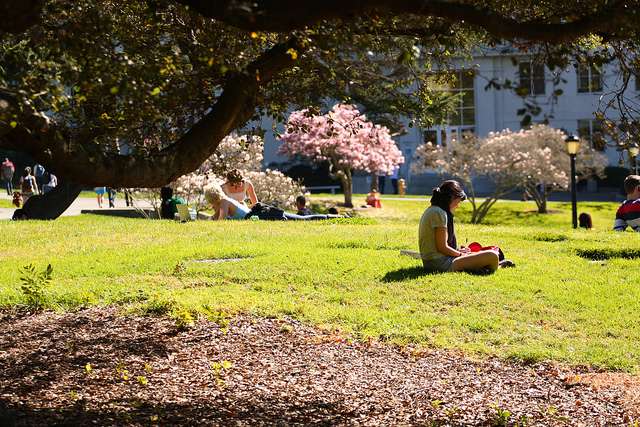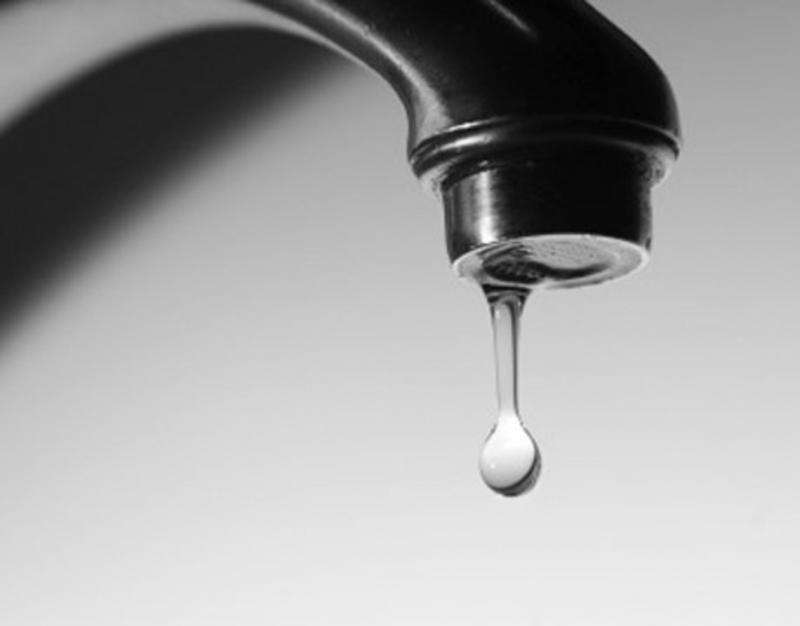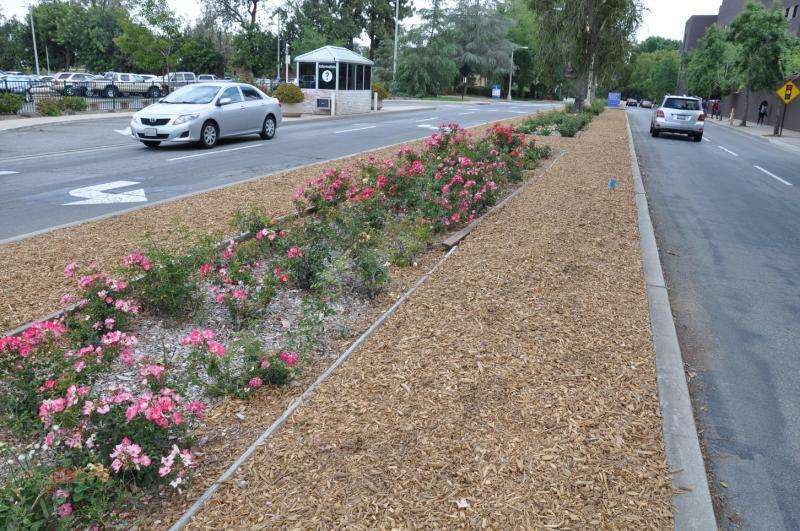Ideas about how cities will meet water-rationing mandates

California is in the fourth year of an historic drought. It's now so bad that state water authorities canceled the last monthly measurement of the snowpack in the Sierra Nevada. There wasn't enough snow to even bother trying.
The situation compelled Governor Jerry Brown to impose emergency water-conservation measures that will require a 25% cut in urban water use over the next year. Regional water districts and California's colleges and universities, which in many ways operate as independent cities, face a strong challenge meeting those mandates. The water footprint of the state's higher education system is substantial: there are 10 University of California campuses, 23 California State University campuses, and 112 California community colleges.
Many of our campuses feature lush tree-lined pathways, vast areas of carefully cultivated gardens and shrubbery, and, of course, plenty of thirsty turf grass. Beyond that, each campus is a virtual city that consumes water in residence and dining halls, research laboratories and general operations.
And, in the case of UC Riverside and other California campuses such as UC Davis and Fresno State University, we conduct long-term agricultural research over thousands of acres devoted to plant and soil science.
Yet the university system is putting in place a number of measures to conserve water. Municipalities, too, will need to implement similar measures to meet the mandates and adapt to this prolonged drought.

Water audits
The typical water use on each campus is highly dependent on campus design, the climate at its location, whether its mission is research or education, and its population. Use of water falls into five broad categories: domestic water for housing, dining and offices (bathrooms, kitchens and showers); irrigation of landscaping; laboratories; healthcare facilities; and agriculture.
Conservation measures have been ongoing for a number of years, and campuses are already achieving water savings through a variety of means.
California Polytechnic University San Luis Obispo retrofitted more than 700 plumbing fixtures with low-flow, waterless fixtures and touch-free sensors. According to the university, this retrofit reduced campus potable water consumption by 15% – saving more than 29 million gallons. That's enough to serve 165 homes for one year. California State University Dominguez Hills installed a wireless weather sensor irrigation control system, which enables the campus to conserve water, reduce runoff and maintain plant health while saving money.
The San Mateo Community College District last year turned off or drained fountains, instituted comprehensive irrigation audits and reduced irrigation time by 25% at all three of its community college campuses.
Plugging leaks
At many campuses throughout the state, most landscape plants are irrigated with non-potable water. In addition, we are working to transition toward drought-resistant ornamental installations.

At UC Riverside, we are removing water-intensive plantings and considering long-term ways to implement turf grass reduction. The campus is also switching its famed Botanical Gardens from potable water to non-potable water for irrigation, with an estimated annual savings of 22 million gallons.
We also are auditing restrooms across campus, looking for leaks, missing aerators and inefficient toilets. We were able to replace over 200 toilets in one residence hall through a state full-cost rebate program, resulting in an annual savings of 338,000 gallons and reduced maintenance. We'd replace more if we had the funding.
We're also asking our community to help report leaks through a new interactive mobile map application that allows users to pinpoint locations where they have seen broken sprinklers or water leaks.
Today, in our region, you can walk past houses where the turf is browning from water reduction or being rolled up for replacement. On our campus, the lovely green turf and rose-bed installation on the traffic island that welcomes visitors to campus have now gone brown, with removal of grass and replacement by wood bark ground cover.
These are the types of measures – some more costly than others – that universities in the west, as well as municipalities, businesses and homeowners, will need to consider if the dry weather continues.
Source: The Conversation
This story is published courtesy of The Conversation (under Creative Commons-Attribution/No derivatives).
![]()





















